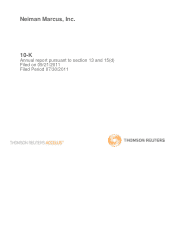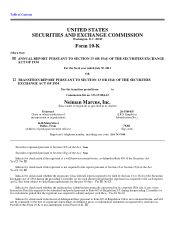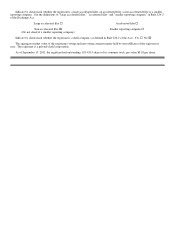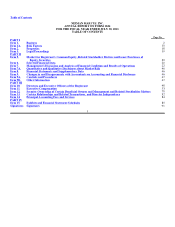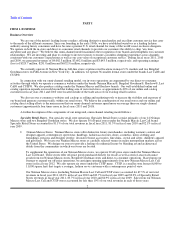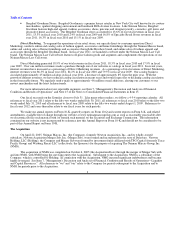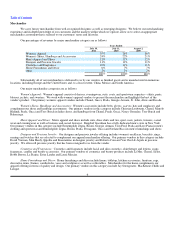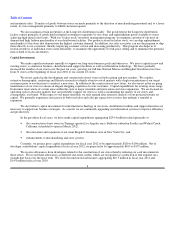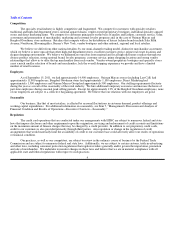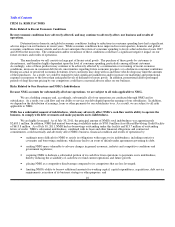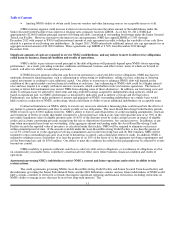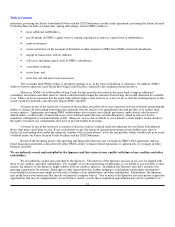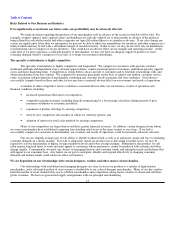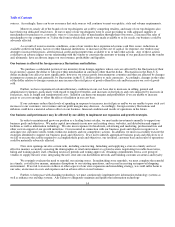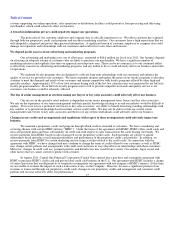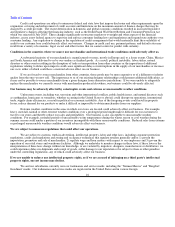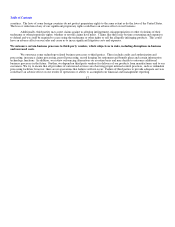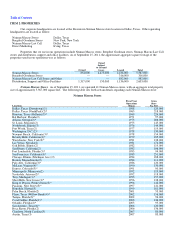Neiman Marcus 2010 Annual Report Download - page 11
Download and view the complete annual report
Please find page 11 of the 2010 Neiman Marcus annual report below. You can navigate through the pages in the report by either clicking on the pages listed below, or by using the keyword search tool below to find specific information within the annual report.
Table of Contents
and maximize sales. Transfers of goods between stores are made primarily at the direction of merchandising personnel and, to a lesser
extent, by store management primarily to fulfill customer requests.
We also maintain certain inventories at the Longview distribution facility. The goods held at the Longview distribution
facility consist primarily of goods held in limited assortment or quantity by our stores and replenishment goods available to stores
achieving high initial sales levels. With our "locker stock" inventory management program, we maintain a portion of our most in-
demand and high fashion merchandise at our distribution facilities. For products stored in locker stock, we can ship replenishment
merchandise to the stores that demonstrate the highest customer demand. In addition, our sales associates can use the program to ship
items directly to our customers, thereby improving customer service and increasing productivity. This program also helps us to
restock inventory at individual stores more efficiently, to maximize the opportunity for full-price selling and to minimize the potential
risks related to excess inventories.
Capital Investments
We make capital investments annually to support our long-term business goals and objectives. We invest capital in new and
existing stores, e-commerce business, distribution and support facilities as well as information technology. We have gradually
increased the number of our stores over the past ten years, growing our full-line Neiman Marcus and Bergdorf Goodman store base
from 31 stores at the beginning of fiscal year 2001 to our current 43 stores.
We invest capital in the development and construction of new stores in both existing and new markets. We conduct
extensive demographic, marketing and lifestyle research to identify attractive retail markets with a high concentration of our target
customers prior to our decision to construct a new store. In addition to the construction of new stores, we also invest in the on-going
maintenance of our stores to ensure an elegant shopping experience for our customers. Capital expenditures for existing stores range
from minor renovations of certain areas within the store to major remodels and renovations and store expansions. We are focused on
operating only in attractive markets that can profitably support our stores as well as maintaining the quality of our stores and,
consequently, our brand. With respect to our major remodels, we only expand after extensive analysis of our projected returns on
capital. We generally experience an increase in both total sales and sales per square foot at stores that undergo a remodel or
expansion.
We also believe capital investments for information technology in our stores, distribution facilities and support functions are
necessary to support our business strategies. As a result, we are continually upgrading our information systems to improve efficiency
and productivity.
In the past three fiscal years, we have made capital expenditures aggregating $254.4 million related primarily to:
• the construction of new stores in Topanga (greater Los Angeles area), Bellevue (suburban Seattle) and Walnut Creek,
California (scheduled to open in March 2012);
• the renovation and expansion of our main Bergdorf Goodman store in New York City; and
• enhancements to merchandising and store systems.
Currently, we project gross capital expenditures for fiscal year 2012 to be approximately $180 to $190 million. Net of
developer contributions, capital expenditures for fiscal year 2012 are projected to be approximately $165 to $175 million.
We receive allowances from developers related to the construction of our stores thereby reducing our cash investment in
these stores. We record these allowances as deferred real estate credits, which are recognized as a reduction of rent expense on a
straight-line basis over the lease term. We received construction allowances aggregating $10.5 million in fiscal year 2011 and
$14.4 million in fiscal year 2010.
8

